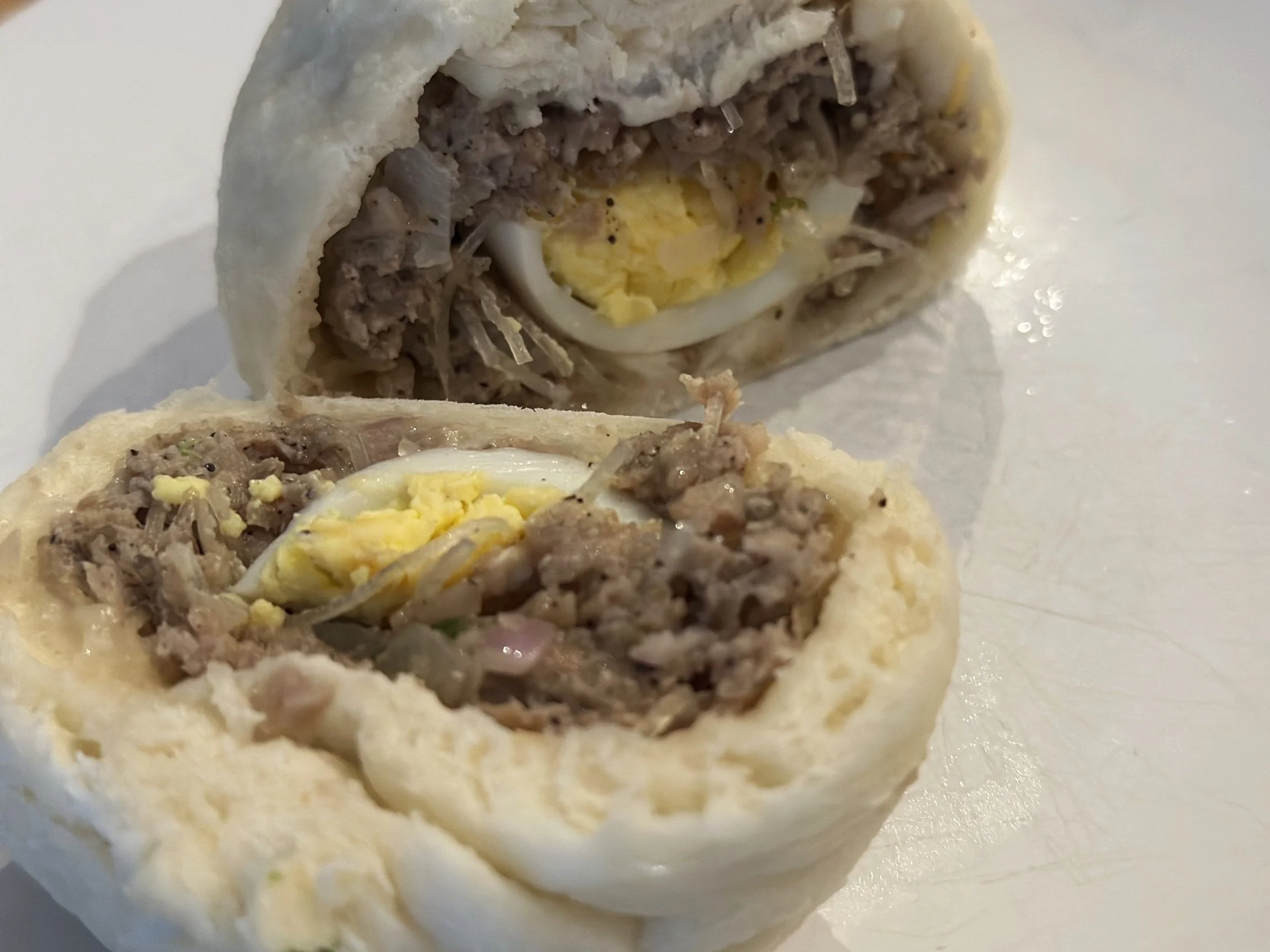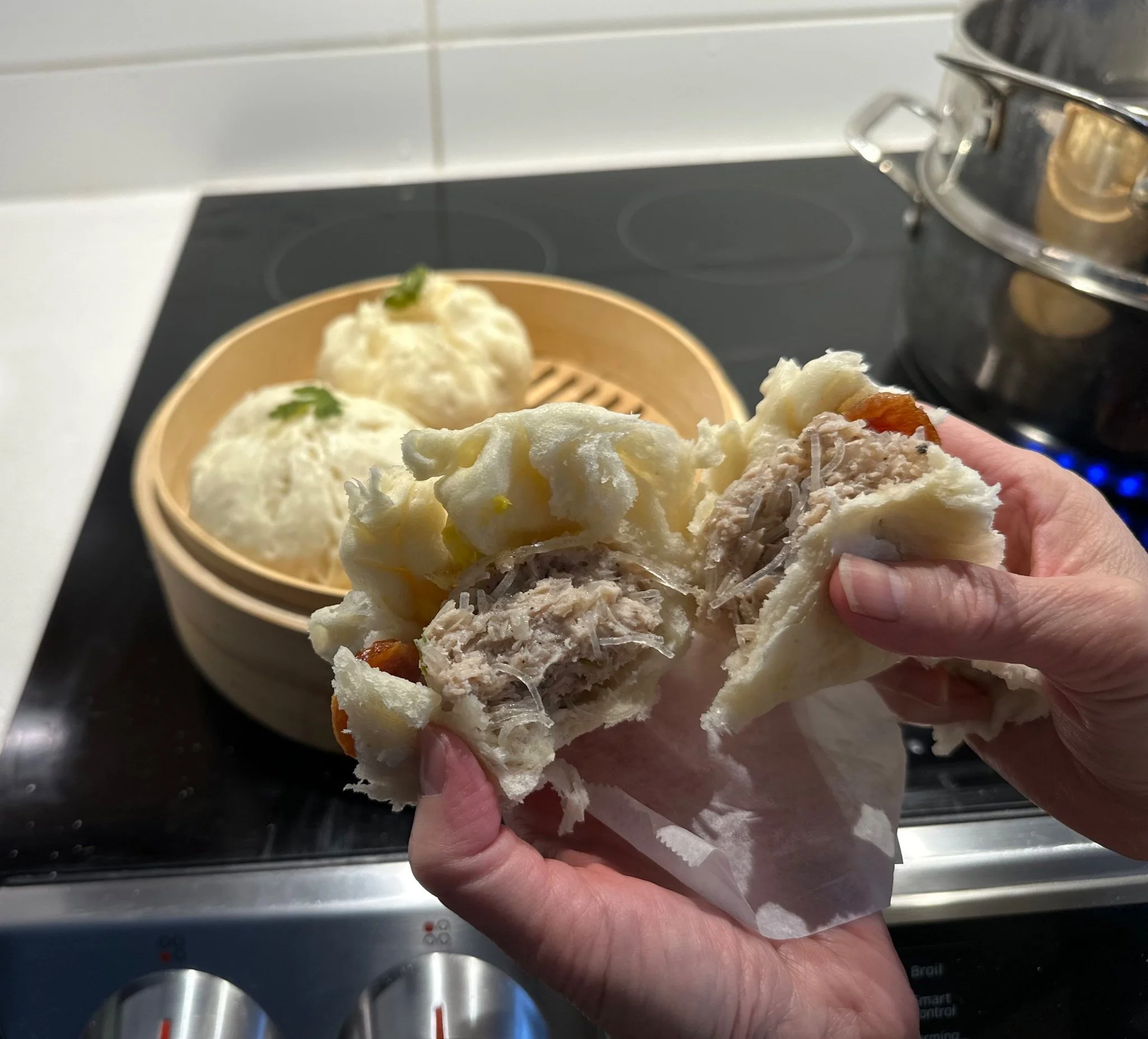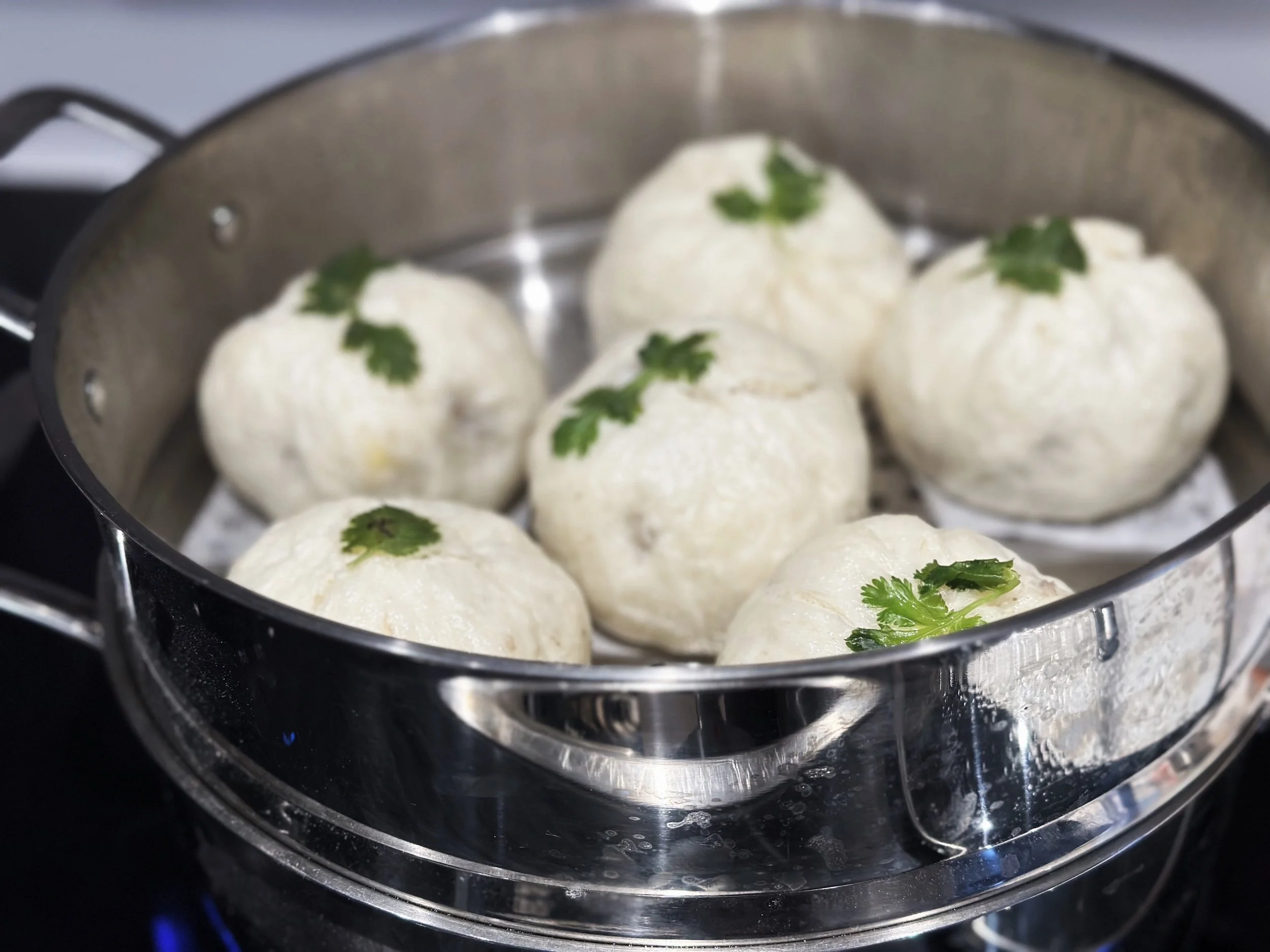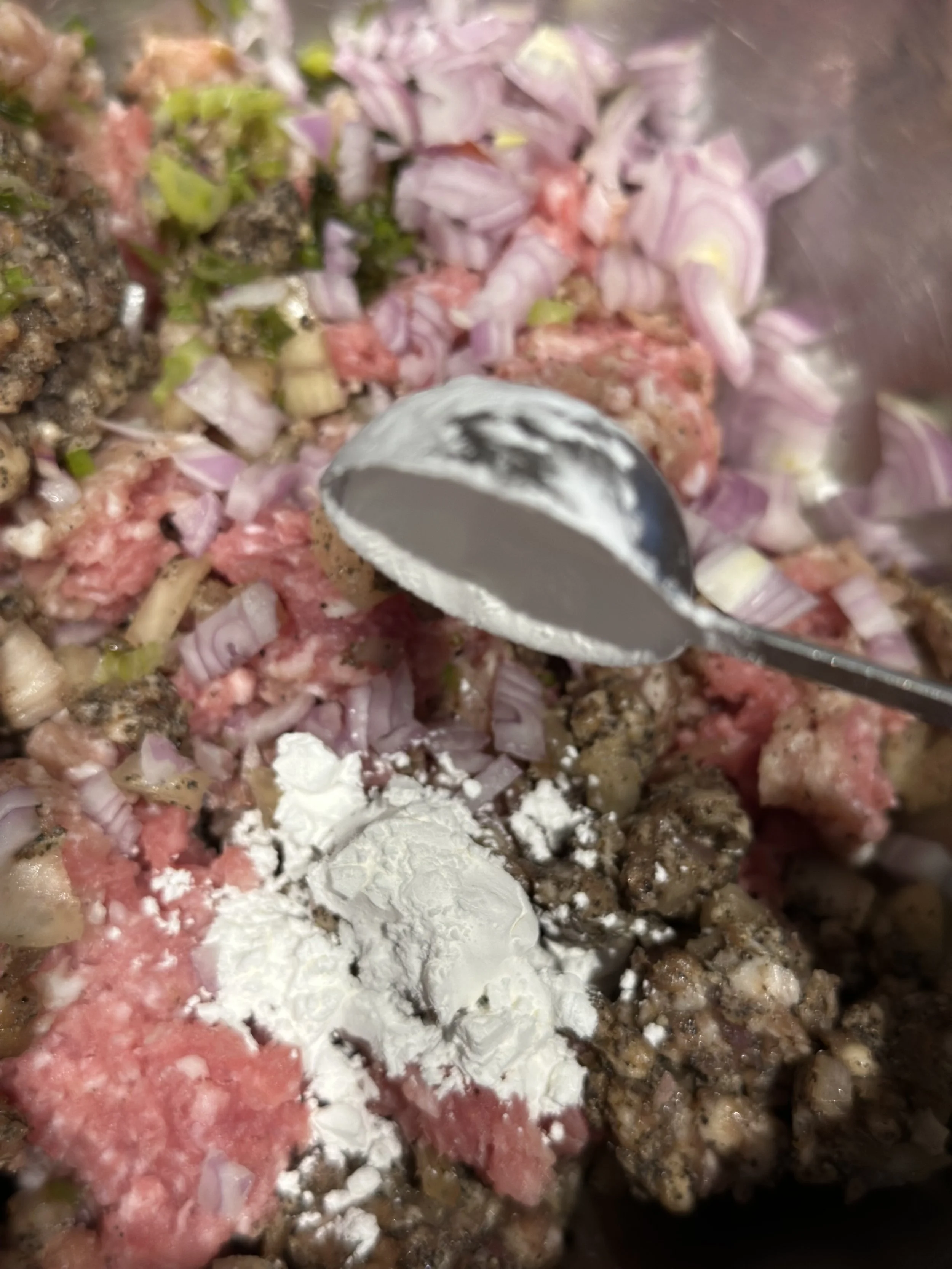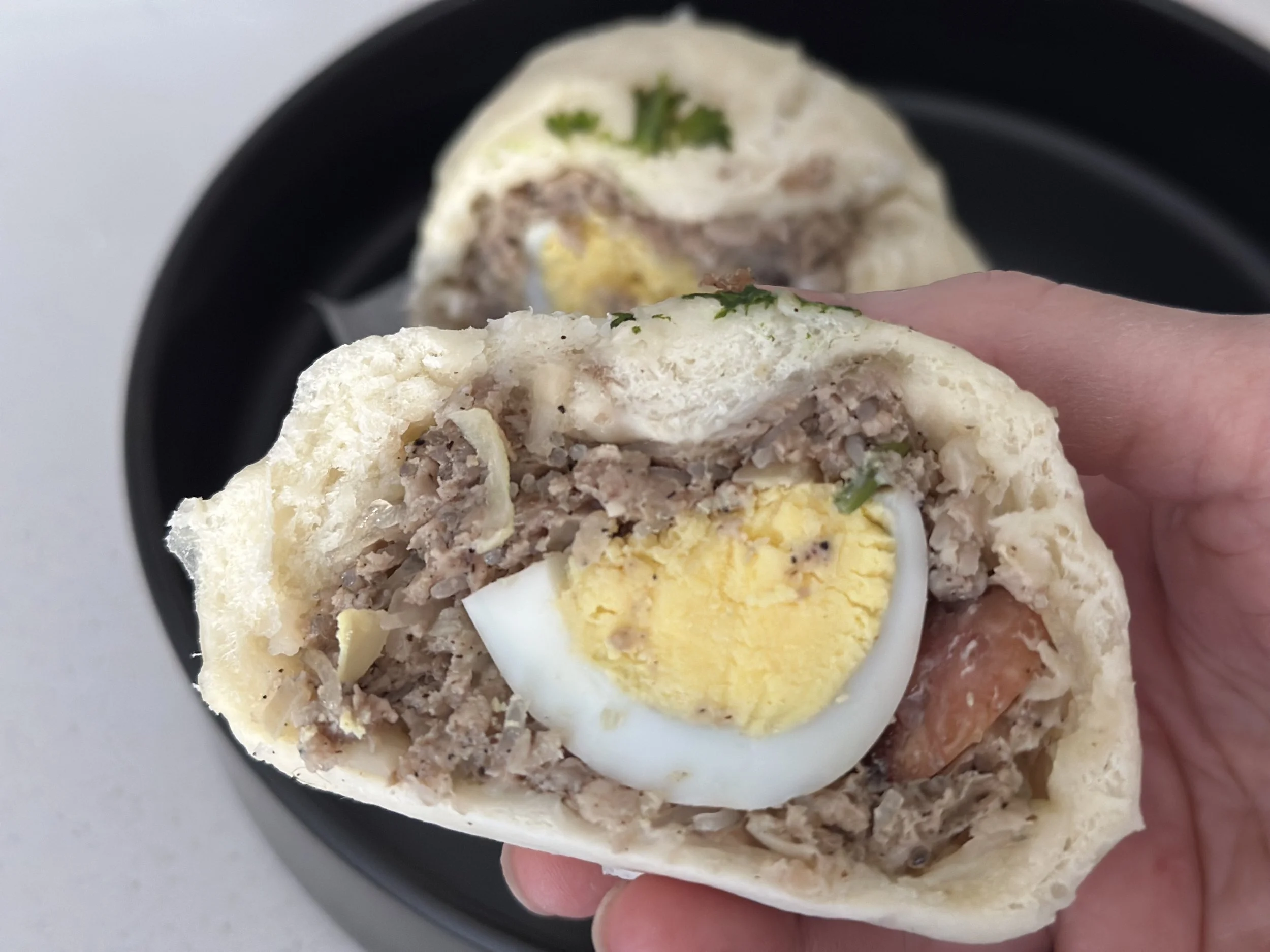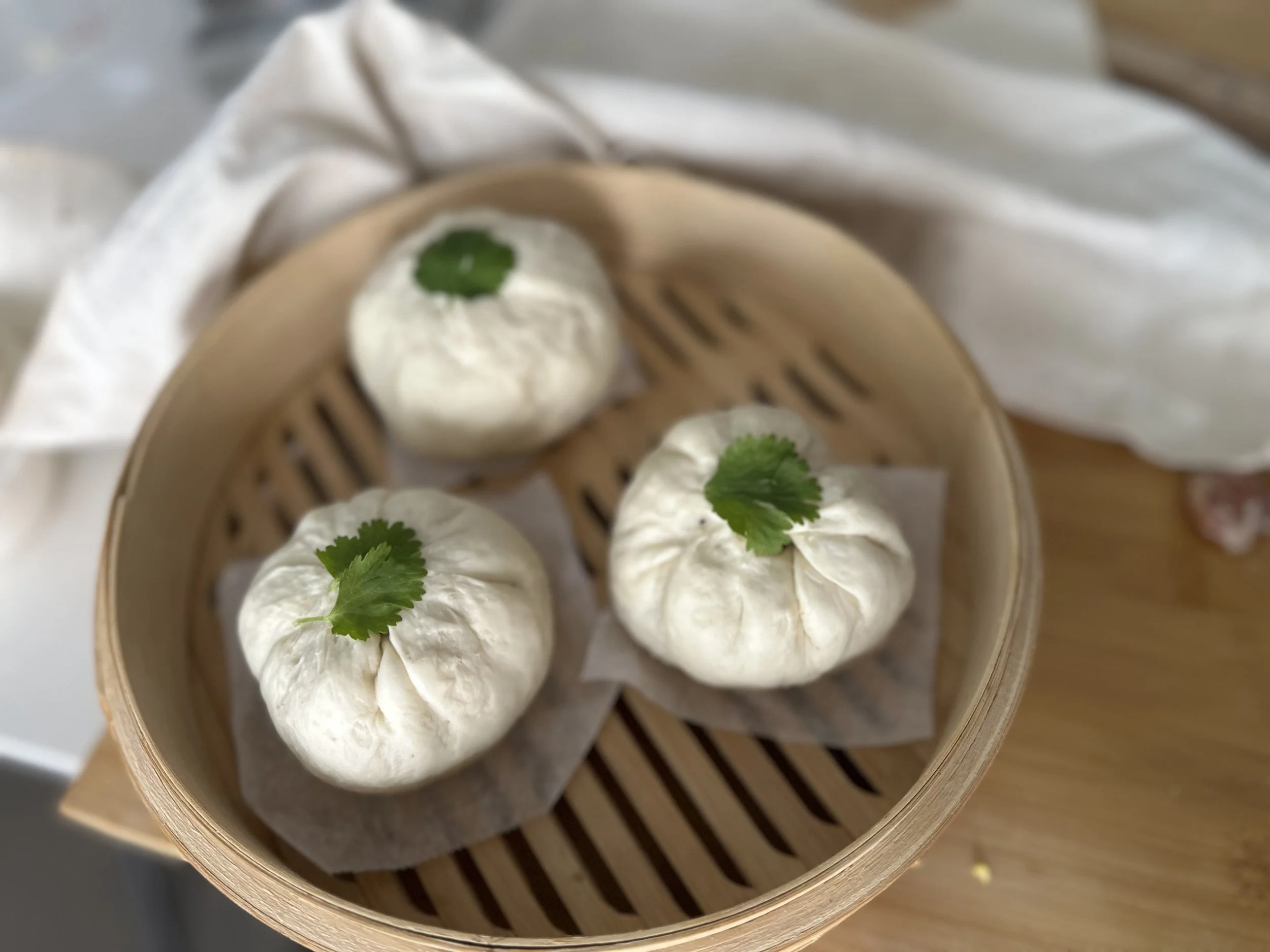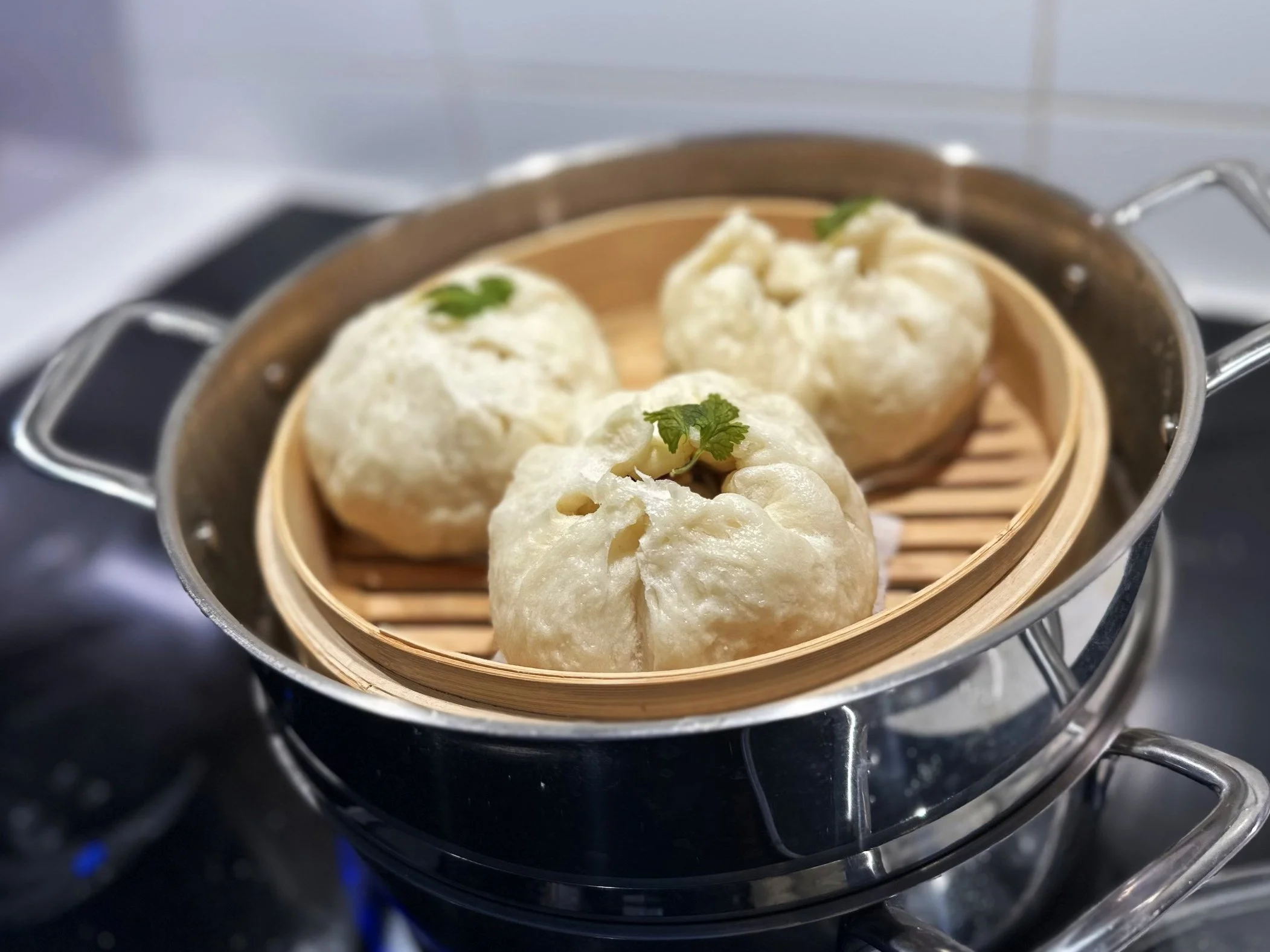Steam Bao Buns ("bánh bao")
The Savory Delight of Vietnamese Steamed Buns "bánh bao,"
In the tapestry of global cuisine, each dish tells its own unique story, reflecting the culture, tradition, and history of its origin. One such culinary marvel is the Vietnamese steamed bun, a delicacy that holds a revered place in Vietnamese gastronomy. Comprised of sweet, fluffy dough filled with savory excellence, these buns encapsulate a rich blend of flavors and textures that offer both comfort and delight. As we delve into the culinary masterpiece of Vietnamese steamed buns filled with pork, Chinese sausage, and boiled egg, it becomes evident that this dish is more than mere sustenance; it is a cultural experience, storytelling through taste.
Near my parents' home in the bustling heart of Saigon, there stood a culinary gem known as 'Ong Ca Can,' a restaurant celebrated for capturing the essence of Southern Vietnamese cuisine. Each morning, the air around this beloved eatery would be perfumed with the inviting aroma of freshly steamed "bánh bao," . These delicate steamed buns, with their pillowy softness, held a world of flavors within, drawing patrons like moths to a flame.
The magic of banh bao lay in its unassuming appearance: a simple bun garnished with a sprig of cilantro, yet concealing a treasure trove of taste sensations. The filling was a delightful symphony—ground pork, aromatic cilantro, the subtle sweetness of Chinese sausage, and a perfectly boiled egg. Together, they composed a melody of flavors and textures that resonated deeply with those who tasted it.
But life's impermanence soon played its hand. The owner of Ong Ca Can moved overseas, and we too found ourselves departing the familiar streets of Vietnam for a new life in the United States. With the miles, a yearning for the flavors of home grew within us, compelling us on a journey of culinary rediscovery. Our mission was clear: to recreate the authentic taste of banh bao that had etched itself into our memories.
The essence of banh bao began with its dough. Traditionally, ammonium bicarbonate was the secret rising agent, but its acrid taste lingered, especially when the buns aged. Freshness was paramount, yet achieving that signature softness seemed elusive—until we discovered the tangzhong method. By pairing yeast with baking powder and incorporating this technique, we crafted a dough that defied expectations. The light, airy texture was achieved without exhaustive kneading, allowing the dough to rise to fluffy perfection.
The filling required no extravagance; its charm was in its simplicity. Our recipe began with ground pork, accented by slices of Chinese sausage and tender sections of boiled egg. To this, we added a handful of chopped cilantro stems, shallots, onions, soy sauce, and a dusting of salt and pepper. For those seeking an umami boost, MSG was a welcome addition. The result was a fusion of straightforward ingredients coming together to form an irresistibly tasty and savory filling.
Innovation, however, found its place. For those looking to elevate or vary the experience, mushrooms, green peas, and even BBQ pork offered inviting alternatives. Chicken or turkey provided familiar yet refreshing substitutes for the traditional pork. This flexibility allowed banh bao to evolve, adapting to the diverse tastes of our new home while keeping the spirit of the original alive.
And so, in our American home kitchen, with flour-dusted hands and hearts full of nostalgia, we endeavored to recreate the flavors of Ong Ca Can. Each "bánh bao," was a tribute—a culinary homage to a cherished past and an unyielding hope to carry our food heritage forward into the future.
Finally, Vietnamese steamed "bánh bao," filled with pork, Chinese sausage, and boiled egg are an epitome of culinary wonder that transcends mere enjoyment. They are a story told through flavor; a journey through the heart of Vietnamese culinary traditions. With simple ingredients that weave an intricate tapestry of taste, these steamed delights offer a balance between texture and flavor, between tradition and innovation. They serve as a reminder that in the world of gastronomy, simplicity and elegance are often intertwined, delivering profound satisfaction with every bite. Through Vietnamese steamed buns, one experiences the soul of Vietnam—comforting, vibrant, and always comforting.
Each has ½ boiled egg and more filling
Steam Bao Bun Recipe:
Supplies:
Mixing bowl medium size or tall container
Scale
Rolling pin
measurement cups
Steamer/ bamboo steamer
Mixing bowl
Stand mixer/ Electric blender or regular blender machine
Bao Bun Dough :
Ingredients:
300g flour
180-200ml water
1 tsp salt
2 tbsp sugar
1 tsp yeast
2 tsp baking powder
50g tangzhong
Prepare the tangzhong: 2 tbsp cornstarch and 2 tbsp water cook
Steps:
Combine flour,salt, sugar, baking powder, along with canola oil
Adding tangzhon: prepare a tangzhong paste by cooking cornstarch and water. This method improves the bun’s texture and freshness, and the addition of cornstarch result in a light, soft and airy bun.
Combine water, yeast pour into the flour
Mixing the dough by hand or save your time use a stand mixer bowl with a dough hook. It is not necessary for it to be elastic for this specific type of dough.
Leave the dough in the container on the counter for 2 hours.
Bao Bun Filling recipe:
In Asia, steam bao buns are a versatile option for meals and snacks. My Vietnamese savory buns, containing pork, Chinese sausage, and boiled egg, are a personal favorite. Despite their resemblance to Chinese bao buns, the filling is unique
Ingredients:
450g ground pork
1 sweet Chinese sausage
2 boiled eggs
3 cilantro leaves and stems
1 small onion chopped
1 shallots chopped
1 tsp cornstarch
1 package vermicelli noodles (clear noodles)
1 tsp Salt
1 tsp ground black pepper
1 tbsp soy sauce
1/2 tsp brown sugar
1/2 tsp chicken/MSG powder optional
Insert bamboo steamer inside metal steamer
Steps:
Combine ground pork, salt, soy sauce, ground black pepper. You can replace turkey or chicken
Finely chop green onion and cilantro stems, omitting cilantro if you don’t like it, as cilantro is optional
Sauté shallot and onion, which should be cooled before being add to the meat
Vermicelli noodles are soaked in cold water and cut into short, small pieces. Clear noodle and cornstarch help bind the filling together effectively, ensure that the meat remains chilled during mixing. Divide the filling into small portions
Boiled egg for 8 minutes then cut it into 4 or two pieces up to your preference
Chinese sausage, boil and slice it thinly, then fry it again to make it fragrant ( to intensify its aroma)
Shaping the buns:
Divide the dough into 6 chunks, roll each into a ball, and rest for 5-10 minutes before proceeding.
Roll the dough ball flat, place the meat filling in the centre and Chinese sausage and boiled egg.
Wrapping the bun. Make a few pleats in the dough, starting from one edge and working your way around and finishing with a pinch at the top to seal the bun for a Traditional look, place each bun on a parchment paper , and rest for 5-10 minutes before steam.
Steam for 10-15 minutes, depending on the size of the buns
Tips:
Steamer: You can steam directly on the metal steamer or use the bamboo steamer. I favor the bamboo steamer, due to its bamboo aroma and ability to retain steam water, thereby keeping the bottom of the buns from getting overly wet
Use the right flour: Use a low-protein flour, such as cake flour or all-purpose flour with a low protein content, to create a tender and soft texture.
Use warm water* Use warm water (around 100°F to 110°F) to help activate the yeast and create a smooth dough.
Don't overmix: Mix the dough just until the ingredients come together. Overmixing can lead to a dense and tough bao bun.
Let it rest: Let the dough rest for at least 1 hour to allow the yeast to ferment and the gluten to relax.
Use the right yeast: Use active dry yeast or instant yeast, as they are specifically designed for bread-making.
Don't overproof: Don't overproof the dough, as it can lead to a dense and flat bao bun.
Don't overcrowd: Don't overcrowd the steamer basket, as it can cause the bao buns to stick together.
By following these tips, you'll be well on your way to creating delicious, soft, and fluffy bao buns!

